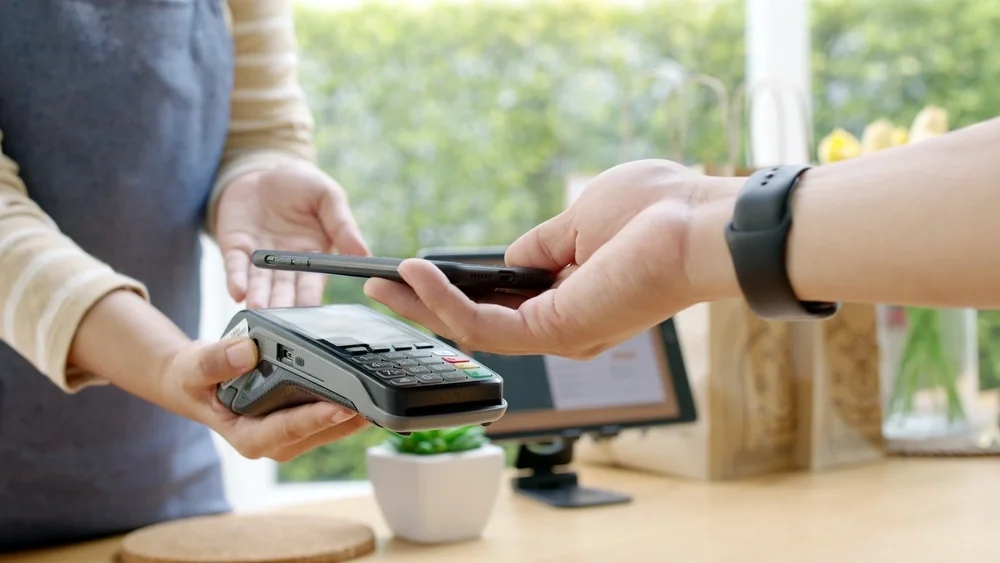Ever come across a site that looks legit - but something feels off? Unfortunately, copycat websites do occur.
These scams can mimic government websites, the NHS, or even your bank or financial provider. Research from Which? found that more than 2,000 suspected banking copycat websites were reported in 2023 alone, showing how these fraudulent sites pose a serious threat to consumers.
It might sound scary, but with a bit of savvy know-how, you can avoid falling victim to scams like these.
What is a copycat website?
A copycat website is a fake site designed to look like a trusted organisation’s official website. They can look almost identical to the real thing, which is why it's important to stay vigilant.
How can I spot a copycat website?
🔒 1. Look for 'https' in the web address - and check for the padlock symbol
The easiest way to spot a scam or unofficial website is if they don't have 'https' in their web address.
HTTPS (Hypertext Transfer Protocol Secure) indicates the authentication of a website, and ensures protection for the privacy and integrity of any data exchanged. To be authenticated for 'https', a trusted third party needs to verify the site’s security.
As you can imagine, site security is vital for any website dealing with personal data – such as a bank, insurance provider or financial services provider. A genuine site will display 'https://' at the start of their web address, so look out for this.
In most modern browsers, a padlock symbol appears next to secure websites. If you don't see this padlock, or if your browser shows a warning message like 'Not secure' or 'Dangerous,' be very careful.
💻 2. Consider where you came across the site
Sometimes scam sites will have a lot of paid ads in Google search results (which you can identify by looking for the 'Ad' text next to the result). While there's nothing wrong with having lots of paid ads, a genuine company will usually appear near the top of the organic (non-advert) results too.
If you discover a company by an ad, and you're not sure of their authenticity, you can always Google the brand name too – and click on the top result that is NOT marked as Ad.
💡 3. Look out for poor design and functionality
A lot of copycat websites just scrape (copy) official websites’ content – but this doesn't always carry across the elements of the design and functionality. Does some of the formatting and design look incorrect? Does it seem to have trouble loading?
Do images look low quality or like they've been copied from somewhere else? Are there spelling mistakes or grammatical errors? These can be warning signs.
While none of these signs alone indicate a scam site, they can be indications to be wary of.
📨 4. Check the fine print on the homepage – and the contact details
A lot of – but not all – scam sites will say somewhere in their (very small) fine print that they are not affiliated with the official source. This can be particularly true for government fraud sites.
Of course, this text will be hidden, but you can start by looking in the small print on the homepage for text like 'not affiliated with any government body'. You can also check the contact details and see if they match the country where the company is registered.
If a UK company has an overseas phone number or a strange email address (like a Gmail or Hotmail account rather than a business email), this could be suspicious.
📃 5. Check when the website was registered
Only one in four people know you can use a domain lookup service such as who.is to see when a site was registered. A brand-new website pretending to be a long-established bank or government service is a major red flag.
💳 6. Be cautious with payment methods
Legitimate websites typically offer secure payment options like credit cards or trusted payment services. Be wary of sites that only accept bank transfers, cryptocurrency, or gift cards as these payments are difficult to trace or recover.
Recent scams to be wary of
In addition to clone sites for Ocean we've spotted (and reported), we have also seen recent scams for the following:
- Fake cost of living support texts – claiming to offer government payments
- Energy bill rebate scams – asking for bank details to process fictional rebates
- Copycat investment platforms – promising unrealistic returns
- Fake online shopping sites – offering impossibly cheap luxury goods
- A company using the name Ocean Loans – which we're not affiliated with – has been flagged by the FCA.
❗Remember: If an offer seems too good to be true, it probably is. Always take a moment to check before entering personal information or making payments online.
If you're ever unsure, or something isn't quite right, take the time to double-check the legitimacy of the company.
Want to report a suspicious website? You can contact the National Cyber Security Centre at ncsc.gov.uk or report scams to Action Fraud at actionfraud.police.uk.
Fiona is a personal finance writer with over 7 years’ experience writing for a broad range of industries before joining Ocean in 2021. She uses her wealth of experience to turn the overwhelming aspects of finance into articles that are easy to understand.
![Email icon]()
Become a money maestro!
Sign up for tips on how to improve your credit score, offers and deals to help you save money, exclusive competitions and exciting products!
Find this useful? Share it with others!









